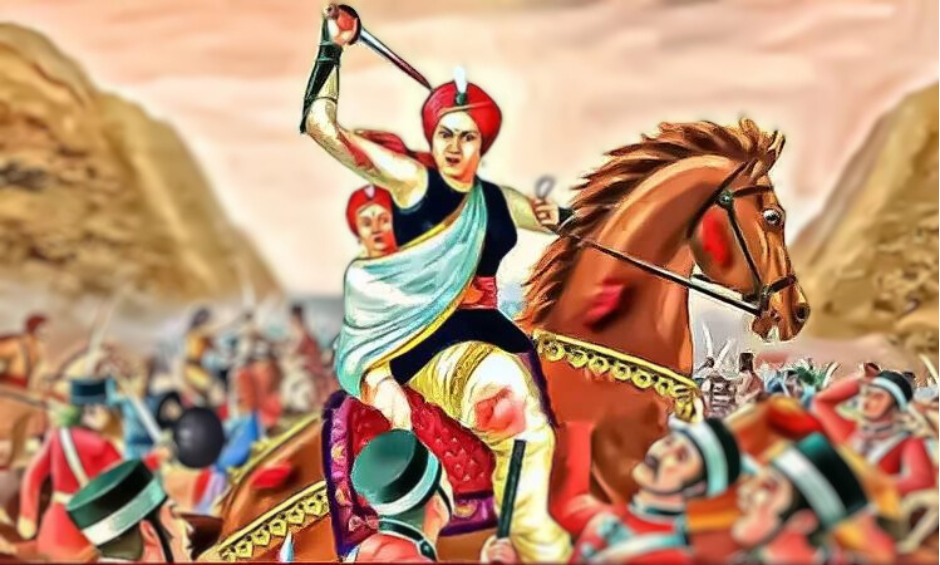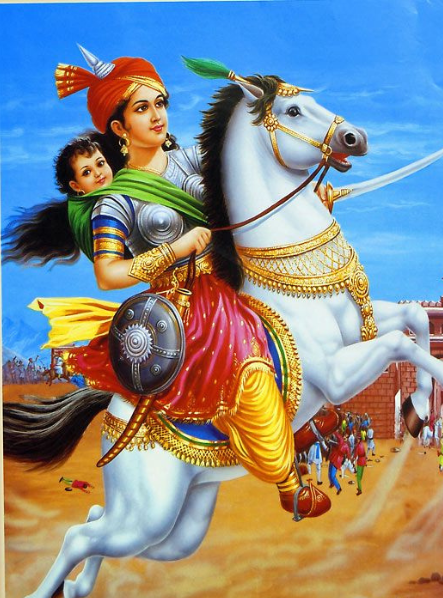The Rani of Jhansi: A Fearless Warrior Queen

In the annals of history, there are certain figures whose courage, resilience, and leadership leave an indelible mark. One such remarkable figure is the Rani of Jhansi, a fierce warrior queen who defied societal norms and led her kingdom against the forces of British colonialism during a time when women’s voices were often stifled. Her legacy continues to inspire generations, serving as a symbol of empowerment and determination.
Early Life and Rise to Power
Born as Manikarnika Tambe in 1828 in Varanasi, India, the woman who would later become known as the Rani of Jhansi, lived a life that would shatter conventional expectations. Raised in a Marathi Brahmin family, she received an unconventional education for a girl of her time, learning to read and write, and acquiring skills that would later contribute to her exceptional leadership.
In 1842, she was married to the Maharaja of Jhansi, Raja Gangadhar Rao. Tragedy struck when she lost both her husband and her son, leaving her in charge of the kingdom. This turn of events marked the beginning of her transformation from a widow to a formidable ruler.

The Warrior Queen
Rani Lakshmibai, as she is widely known, did not let her grief immobilize her. Instead, she emerged as a warrior queen with a determination to protect her kingdom from the looming threat of British colonialism. She trained in martial arts, horsemanship, and sword fighting, equipping herself with the skills necessary to lead her troops into battle.
When the Doctrine of Lapse policy was employed by the British East India Company to annex princely states upon the death of a ruler without a direct male heir, Rani Lakshmibai refused to bow down to the unjust rule. She adopted a son and took upon herself the responsibility of preserving her kingdom’s independence.
The Sepoy Mutiny and Heroic Resistance
The year 1857 marked a turning point in India’s struggle against British rule. The Indian Rebellion, often referred to as the Sepoy Mutiny, erupted across the subcontinent. Rani Lakshmibai played a pivotal role in this historic event. She refused to cede her kingdom to the British and instead led her troops into battle.
Her courageous stand during the Siege of Jhansi in March 1858 is etched in history. Despite being outnumbered, Rani Lakshmibai’s strategic acumen and fierce determination allowed her to put up a fierce resistance. It was her leadership that drove the defenders of Jhansi to fight valiantly, earning her the moniker of the “Warrior Queen.”

Legacy and Inspiration
Rani Lakshmibai’s heroic actions and unwavering commitment to her kingdom have left an indomitable mark on the pages of history. Her legacy continues to inspire individuals worldwide, especially women, to break free from the constraints of society and realize their full potential. Her story serves as a reminder that determination, courage, and leadership are not bound by gender norms.
The Rani of Jhansi’s legacy is celebrated in various ways, from literature to films, and her statue stands as a symbol of valor and strength in her hometown of Jhansi. Her life story resonates with those who aspire to create change and stand up against oppression.
Final Word
The Rani of Jhansi’s life embodies the essence of resilience and courage in the face of adversity. Her journey from a young girl to a warrior queen is a testament to the power of determination and the impact that a single individual can have on the course of history. Rani Lakshmibai’s legacy serves as a beacon of hope, inspiring generations to come to strive for justice, equality, and freedom. Her name will forever remain synonymous with the struggle for independence and the unyielding spirit of a true leader.
*Images are subject to copyright to the respective owners